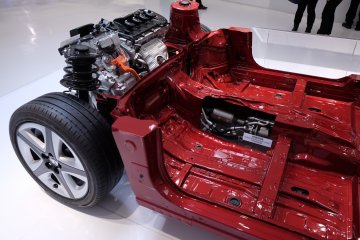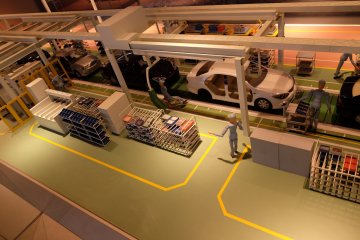Toyota is not only famous for its cars. The company’s lean and optimisation standards created a new industrial philosophy. Companies would later integrate them into their own organizations to improve processes, final products and customers' experiences. Visiting a Toyota plant in Japan and observing this philosophy being applied is not only an amazing educational experience but also an eye opener into the technology, quality, and standards of Japanese industry.
Located very close to Nagoya (Aichi’s prefectural capital), the city of Toyota is an important hub of the company. Several manufacturing plants and corporate buildings are here. Toyota’s Kaikan museum is in the city as well and it’s from here that the company’s plant tours begin.
The perfectly well organised tour starts with a fifteen minutes bus shuttle from the museum to one of the plants. The group walks into the plant and observes the production of cars and components from a platform that goes around all the assembly line. The guide walks with all visitors while explaining important philosophies of Toyota. All of them can be observed being applied just below.
Two of the most important pillars of Toyota’s production system are “Just in Time” and “Jidoka.” The objective of the first one is to eliminate all possible waste by producing what is needed, when is needed, and in the amount needed. The second pillar’s objective is to build quality in each of the process. Both of this pillars are explained and observed in real life during the plant’s tour.
The visit inside the plant lasts one hour. It is extremely interesting to observe the different production stages. The tour guides the visitors from the very beginning of the assembly of a car to a completed one.
There is a strict no photography or video policy inside the plant. You must leave all electronic devices in the locks at the Kaikan museum or at the bus.
Although the tour is free, you must make a reservation first. Every day, several Japanese tours are offered, but only one in English. Plan ahead because spaces are limited and fill up fast. To make a reservation, go here.
A small but interesting note about Toyota is that the founder's last name was actually 'Toyoda'. If written in katakana (one of the Japanese writing systems along with hiragana and kanji), Toyoda needs ten strokes. Toyota instead, needs only eight strokes. This number is a lucky number because when written in kanji, the bottom is wider. It indicates that something or someone is growing.
Hope you enjoy the Toyota tour!












